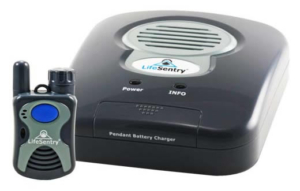When you’re facing immediate danger, will your personal emergency alarm actually protect you? Recent data shows that users with emergency alarms receive help 20-30 minutes faster than those without, but effectiveness varies dramatically based on device type and usage.
This guide examines the real-world effectiveness of personal emergency alarms, revealing which situations they excel in—and where they fall short.
Understanding Emergency Alarm Effectiveness
Personal emergency alarms achieve effectiveness ratings between 5-9 out of 10, depending on design and intended use. The most effective devices combine reliable technology, simple activation, and appropriate features for specific situations.
Key effectiveness factors include:
- Response speed improvements (15-30 minutes faster help)
- Deterrent effects (70% of attackers flee when alarms sound)
- GPS accuracy within 10 meters
- User accessibility under stress
5 Key Benefits of Personal Emergency Alarms
1. Increased Safety and Protection (9/10)
Emergency alarms provide multi-layered protection through deterrent effects and rapid response. Studies show 70% of potential attackers flee when alarms activate, particularly in urban environments where bystander intervention is likely.
2. Lightning-Fast Emergency Response (10/10)
GPS-enabled alarms share precise location data with emergency services, eliminating communication delays. Users report 15-30 minute response time improvements—often the difference between life and death in medical emergencies.
3. Simplicity and Affordability (8/10)
Most devices feature one-button activation, accessible to all ages and technical abilities. At $50-300, personal alarms cost significantly less than home security systems ($500-2000+) while providing individual protection.
4. Peace of Mind Value (9/10)
Users report increased confidence when walking alone or traveling. Family surveys indicate annual peace of mind values between $200-500, often exceeding device costs.
5. Discrete Protection (7/10)
Modern alarms come in discrete formats—wearable jewelry, key fobs, or pendants—providing tactical advantages since attackers remain unaware until activation.
Top Performers Analysis
Personal Emergency Alarms achieve the best balance of features, cost, and ease of use. They offer direct 911 calling, GPS tracking with user-controlled privacy, and no subscription requirements.
Lone Worker Devices excel in professional environments with 24/7 monitoring, automatic fall detection, and industry compliance features.
Satellite Communicators provide essential coverage in remote areas without cellular service but require higher investment and clear sky access.
Real-World Effectiveness Scenarios
High-Effectiveness Situations (8-9/10)
- Medical emergencies: GPS location sharing improves response times by 20+ minutes
- Lone worker incidents: Automatic fall detection works when manual activation isn’t possible
- Late-night urban walking: Sound deterrent causes 70% of attackers to flee
Moderate-Effectiveness Situations (6-7/10)
- Vehicle emergencies: GPS helps locate disabled vehicles quickly
- Travel safety: Works well in developed areas with cellular coverage
- Harassment prevention: Visible devices provide some deterrent effect
Limited-Effectiveness Situations (4-5/10)
- Remote areas without cell service: Basic alarms provide no GPS or communication
- Determined attackers: May not be deterred by noise alone
- Complex emergency situations: Require human judgment beyond device capabilities
Cost-Benefit Analysis
Investment Breakdown
- Basic devices: $50-100 (essential features)
- Advanced GPS devices: $150-300 (professional features)
- Monthly monitoring: $20-50 (optional for most devices)
- Monthly cost equivalent: $4-25 (less than coffee shop visits)
Value Calculation
Life-saving potential: Priceless Peace of mind annual value: $200-500 (family surveys) Insurance discounts: 5-10% possible Medical cost avoidance: $5,000-50,000 potential
Limitations and Realistic Expectations
Common Limitations
- Battery dependency: 24-48 hours active use, requires regular charging
- Network coverage: Limited effectiveness in areas without cellular service
- User error: Must remember to carry and know how to activate
- Environmental factors: Weather and terrain can affect signal quality
Setting Expectations
Personal emergency alarms enhance safety significantly but aren’t foolproof. Best results occur when devices complement other safety measures like situational awareness and emergency planning.
Expert Recommendations by User Type
For Elderly Individuals
Top choice: mCareMate Pendant with fall detection Key features: Large buttons, waterproof design, automatic fall detection, medical alert integration
For Women’s Safety
Top choice: Discrete wearable alarms with GPS Key features: Fashionable design, quick activation, bystander alert capabilities
For Lone Workers
Top choice: Professional monitoring systems Key features: Industry compliance, 24/7 monitoring, automatic check-ins
For Travelers
Top choice: Multi-network devices with international roaming Key features: Global coverage, embassy integration, multiple language support
Maximizing Device Effectiveness
Setup Best Practices
- Configure emergency contacts (family first, then authorities)
- Set GPS privacy preferences
- Test monthly to build muscle memory
- Keep device easily accessible
Daily Usage Tips
- Treat like essential item (keys, wallet)
- Monitor battery levels weekly
- Practice activation procedures
- Maintain emergency contact information
Frequently Asked Questions
Q: Do personal emergency alarms really work? A: Yes, studies show 15-30 minute response time improvements and 70% attacker deterrent rates in urban areas.
Q: What’s the most reliable device type? A: Dedicated emergency alarms (mCareWatch/mCareMate style) and lone worker devices achieve 9/10 effectiveness ratings.
Q: Are they worth the cost? A: For most users, yes. Monthly costs of $4-25 provide significant value through improved response times and peace of mind.
Q: What are the main limitations? A: Battery dependency, network coverage requirements, and user error factors. No device provides 100% guaranteed protection.
Q: How often should I test my device? A: Monthly minimum to maintain familiarity and verify functionality.
Final Verdict
Effectiveness Rating: 8.5/10 overall for properly selected and used devices
Investment Recommendation: Worthwhile for most people, especially elderly individuals, women frequently alone, high-risk workers, and anyone wanting family peace of mind.
Key Success Factors: Choose appropriate device type for your needs, test regularly, and maintain realistic expectations about capabilities.
Bottom Line: Personal emergency alarms represent excellent value-to-safety investments when properly matched to user needs. While not foolproof, they provide proven response time improvements and deterrent effects that significantly enhance personal safety.
Next Steps: Assess your risk factors, compare device features, and start with a mid-range device ($100-200) that balances essential features with ease of use.
Start with Barnes Protection if you’re looking for personal safety devices or other systems to feel safer in your home!

